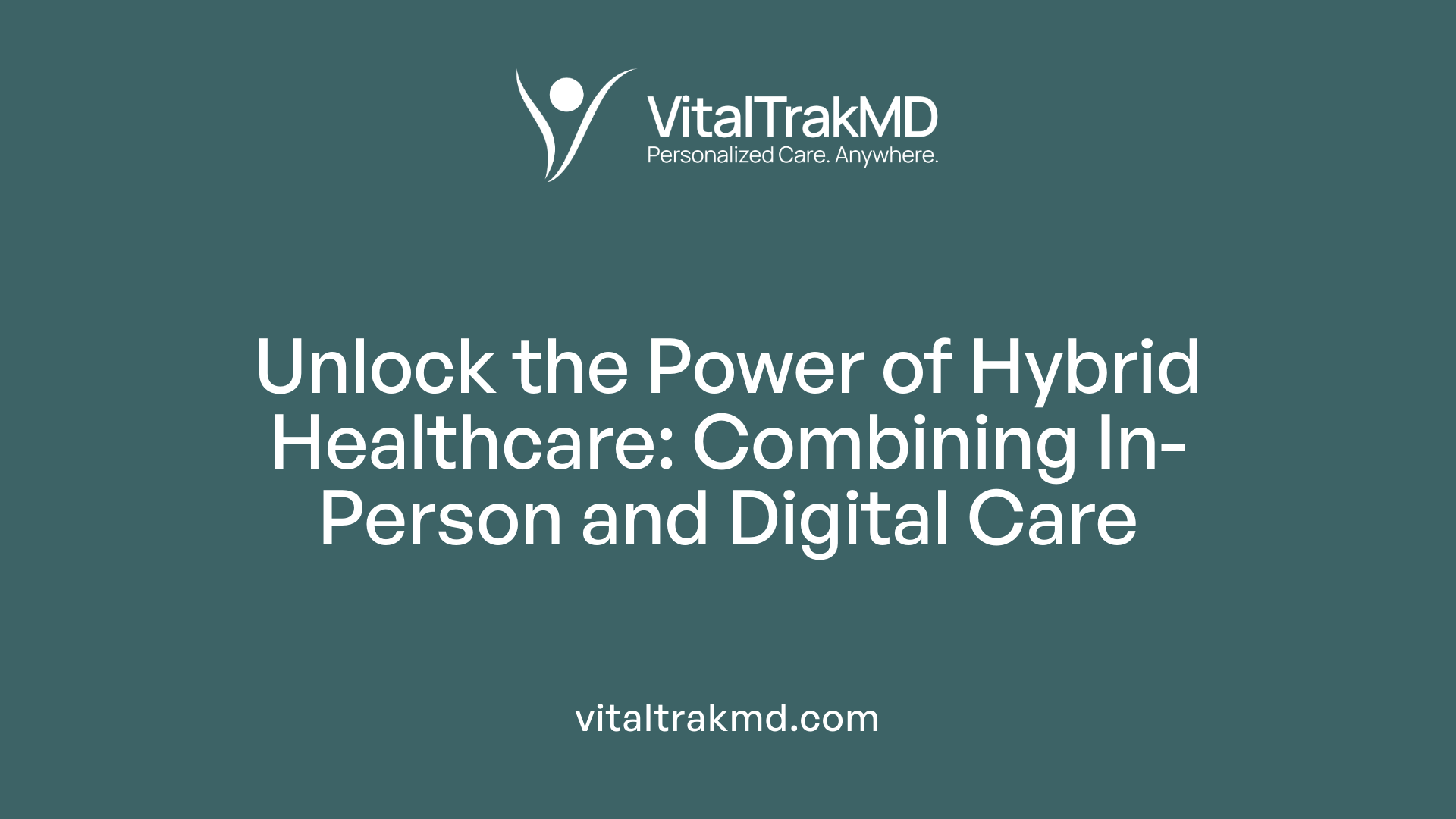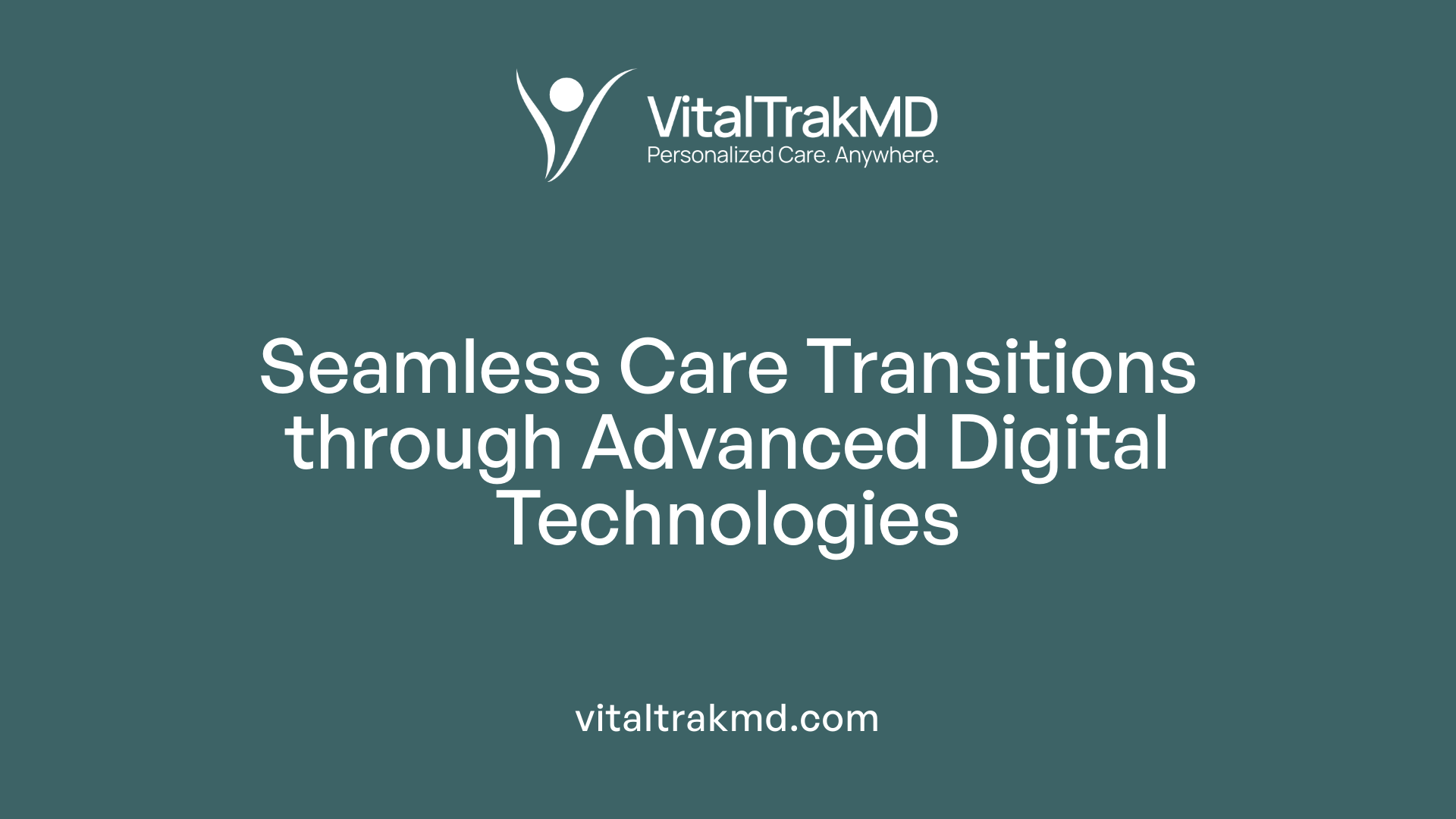Seamless Transitions from In-Person to Hybrid Healthcare Models

Introduction to Hybrid Healthcare Models and Seamless Transitions
As healthcare systems worldwide adapt to technological advancements and changing patient expectations, the integration of in-person and virtual care—known as hybrid healthcare—has emerged as a vital strategy. This evolution promises increased access, improved efficiency, and enhanced patient experiences. Achieving seamless transitions from traditional in-person methods to hybrid models requires comprehensive planning, effective change management, and technological integration. In this article, we explore how healthcare providers can master this transition while ensuring quality, safety, and patient-centeredness.
Understanding Hybrid Healthcare Models and Their Benefits

What is a hybrid healthcare model?
A hybrid healthcare model combines traditional in-person medical care with digital health tools and telehealth services. This integrated approach aims to enhance patient treatment and engagement by leveraging technologies such as remote monitoring devices, condition-specific assessments, AI-enabled motion capture, and patient education platforms. These tools support various care pathways, allowing providers to triage and manage care more efficiently.
For example, remote monitoring can track vital signs and symptoms outside the clinical setting, while digital platforms enable virtual consultations and follow-ups. This setup not only improves health outcomes but also reduces unnecessary visits, addresses barriers like geographic distance and scheduling conflicts, and increases personalization of care. Especially useful for managing chronic conditions and musculoskeletal issues, hybrid models foster seamless coordination between physical and virtual care.
What are the benefits of transitioning to a hybrid care model?
Switching to a hybrid care system offers numerous advantages. It enhances healthcare access by eliminating transportation barriers and accommodating patients in remote, rural, or underserved areas. Continuous communication and engagement through multiple channels—such as video calls, messaging, and remote monitoring—boost care continuity, especially for patients requiring ongoing management of chronic diseases or rehabilitation.
Additionally, hybrid models help reduce wait times and decongest waiting rooms by allowing virtual visits for non-urgent needs. This accelerates care delivery and improves efficiency. Cost savings are significant, as both providers and patients save on expenses related to transport and overhead costs. Furthermore, hospital capacity can be expanded through hospital-at-home programs, optimizing resource use and enabling better patient outcomes.
Role of digital tools and remote monitoring
Digital tools such as telehealth platforms, remote monitoring devices, and AI-driven analytics form the backbone of hybrid healthcare. They enable real-time symptom tracking, virtual diagnostics, and secure data sharing among care teams. Technologies like wearable sensors, portable imaging, and digital communication platforms facilitate personalized care plans tailored to individual patient needs.
While challenges such as interoperability and data security exist, ongoing technological advancements—including AI and advanced predictive analytics—promise to further improve decision-making and care quality. The covid-19 pandemic highlighted the importance of these digital solutions, accelerating their integration into mainstream healthcare. Overall, digital tools empower clinicians to deliver more flexible, accessible, and patient-centered services in a hybrid setting.
The Evolution and Impact of Hybrid Care During COVID-19

How did the COVID-19 pandemic accelerate hybrid healthcare adoption?
The COVID-19 pandemic was a major catalyst for the rapid expansion of hybrid healthcare models worldwide. Before the pandemic, only about 8% of consumers engaged in virtual visits. By 2020, this figure jumped to 22%, reflecting a significant shift in patient behavior and acceptance of digital health services. Physicians also notably increased their use of telehealth, with 80% conducting virtual consultations during that year, up from 22% in 2019.
Patient comfort with technology grew, including among older populations who initially had reservations. The need to maintain continuity of care while minimizing infection risk and managing healthcare workforce shortages further drove adoption. Healthcare systems developed innovative solutions, such as Israel’s Sheba Beyond virtual hospital, which integrated remote monitoring and digital diagnostics with traditional care. These advancements showed that hybrid models could be scaled effectively during crises, transforming healthcare delivery for the long term.
What are some real-world applications of hybrid models post-COVID-19?
Post-pandemic, hybrid care models have become embedded into healthcare practice across various settings. The Sheba Medical Center in Israel exemplifies this with its integration of a virtual hospital, remote monitoring devices like TytoCare examination kits, and portable diagnostic tools. This setup enabled the treatment of over 450 patients via a home hospitalization program, significantly reducing their length of stay in traditional hospitals and alleviating capacity constraints.
Similarly, primary care and behavioral health services now frequently combine virtual consultations with in-person visits, utilizing telehealth platforms, remote monitoring, and digital health tools. These approaches have made care more accessible, especially for patients in rural or underserved areas, and have improved chronic disease management, reducing hospital readmissions and enhancing patient satisfaction.
These real-world applications demonstrate how hybrid models are shaping a more flexible, efficient, and patient-centered healthcare system, not only during emergencies but as a standard component of future healthcare delivery.
Integrating Technology for Seamless Care Transitions

What technologies facilitate seamless integration of virtual and in-person care?
A range of digital tools and platforms play a vital role in connecting virtual and traditional healthcare services. Telehealth platforms enable secure video consultations, allowing patients to consult with providers remotely while maintaining the option for in-person visits when necessary.
Remote monitoring devices, such as vital sign sensors, portable ECGs, and other wearable technologies, continuously gather patient health data outside the clinical setting. These devices transmit real-time information to healthcare systems, enabling timely interventions.
The Datos Health platform exemplifies comprehensive digital health systems that integrate diagnostics, data analysis, and communication channels to support remote diagnostics and patient-provider interactions.
Effective integration also relies on Electronic Health Records (EHRs) that facilitate real-time data sharing across care teams. Interoperability across various digital platforms remains a challenge but is crucial for delivering coordinated care.
Patient engagement tools, including online appointment scheduling, automated reminders, and secure two-way messaging, foster ongoing communication and adherence to care plans. Together, these technologies enable a cohesive care experience.
Looking ahead, advancements involving artificial intelligence (AI) and sophisticated analytics promise to enhance decision-making, support predictive diagnostics, and personalize care pathways, making transitions smoother and more effective.
How do these tools improve patient transitions?
The integration of these technological tools significantly enhances the quality and safety of patient transfers between care settings. Real-time communication and continuous data flow facilitate early detection of potential issues and prompt responses.
Remote assessments and monitoring help providers intervene before problems escalate, reducing hospital readmissions and errors. For example, remote vital sign monitoring can alert clinicians of deterioration, enabling swift action.
Digital appointment scheduling and reminder systems improve patient attendance and engagement, which is vital during transitions from hospital to home or between specialists.
Furthermore, standardized and secure data exchange supported by interoperable EHRs ensures that all care providers have access to current, accurate information, fostering coordinated efforts.
AI-driven data analysis can also predict risks and suggest preemptive care strategies, especially beneficial for vulnerable populations or complex cases. Overall, these tools create a seamless, patient-centered experience, ensuring continuity and safety during care transitions.
Strategies and Best Practices for Transitioning to Hybrid Models
What are key steps for healthcare organizations to transition successfully?
Transitioning to a hybrid care model involves careful planning and execution. The first step is to assess current practice needs and readiness. This includes evaluating existing technological infrastructure, staff capabilities, and patient demographics to identify gaps and opportunities.
Next, organizations should develop a clear hybrid care strategy aligned with their goals. This strategy outlines how virtual and in-person services will complement each other to improve patient care.
Investing in the right infrastructure is essential. This includes telehealth platforms, remote monitoring devices, secure communication systems, and electronic health records. Equipping staff with adequate training on new workflows, technology, and patient engagement techniques minimizes resistance and boosts confidence.
Workflow modifications are also necessary. Digital check-in procedures, scheduling adjustments, and protocols for data sharing should be implemented to streamline operations. Ensuring regulatory compliance and establishing communication channels with patients enhance transparency and trust.
Pilot programs, continuous feedback collection, and iterative improvements help refine the model for sustainability. Overall, a phased approach allows organizations to adapt gradually and scale successfully.
What challenges might organizations face, and how can they overcome them?
Implementing a hybrid model presents several challenges. Technical interoperability between different digital systems can be complex. To navigate this, organizations must invest in secure, standardized platforms that facilitate seamless data exchange.
Staff adaptation is another obstacle. Providing comprehensive training and ongoing support helps staff become proficient and comfortable with new workflows.
Digital literacy gaps among patients can limit access. Targeted education sessions, user-friendly interfaces, and multilingual support can mitigate these disparities.
Regulatory hurdles, such as licensing and reimbursement policies, may hinder implementation. Engaging policymakers and advocating for adaptable regulations is critical.
Organizations should also prioritize clear communication about the benefits and process changes to secure stakeholder buy-in. Continuous monitoring and evaluation allow adaptation to emerging challenges, ensuring long-term success.
Additional Information
For further guidance, search queries like "Practices for healthcare transition to hybrid models" can provide more detailed case studies and practical frameworks.
Implementing the right strategies makes the shift to hybrid healthcare effective, patient-centered, and resilient, especially in times of crisis or resource constraints.
Designing Flexible and Patient-Centered Care Pathways
Hybrid healthcare models emphasize the importance of adaptable care pathways that seamlessly integrate various modes of treatment—online, in-person, and at-home care—according to patient needs and circumstances.
What are the main care pathways in hybrid models?
The core pathways include inpatient hospitalization, home hospitalization, inpatient telemedicine, and tele-home hospitalization. These options create a continuum of care that supports patients transitioning smoothly between different settings based on their clinical condition and personal preferences.
For instance, a patient might begin with remote consultations or outpatient care, then be hospitalized if necessary, or vice versa. This flexibility allows healthcare providers to respond dynamically to changing patient needs, optimize resource use, and improve satisfaction.
The design of these pathways supports real-time decision-making, where the care plan can shift from physical hospital stays to home-based or virtual care, ensuring continuous treatment and patient safety. Whether a patient needs intensive hospital intervention or prefers to recover at home with remote support, the system adapts accordingly.
How do these pathways support personalized medicine?
These routes facilitate a tailored approach to health management, aligning treatment modalities with individual preferences, health status, and lifestyle. Patients can select the care setting—whether at home, in a hospital, or through virtual visits—that best matches their needs.
Incorporating remote monitoring devices and virtual consultations allows care plans to be highly personalized. Adjustments can be made in real time based on patient condition, which improves engagement and outcomes.
This flexibility is particularly beneficial for managing chronic conditions or rehabilitative care, where ongoing monitoring and responsive adjustments are essential. Ultimately, these pathways foster a patient-centered environment, providing care that respects individual choices and circumstances.
Addressing Challenges and Future Trends

What challenges might hinder seamless transitions and how can they be addressed?
Implementing hybrid healthcare models involves navigating several obstacles that can impact smooth care transitions. Disparities in digital literacy and technological access pose significant barriers, especially in underserved or rural populations. Interoperability challenges among different digital systems can also complicate data sharing and continuity of care.
To overcome these hurdles, targeted investments in infrastructure are essential, such as expanding high-speed internet and providing affordable remote monitoring devices. Patient education programs can improve digital literacy and comfort with technology. Developing standardized protocols for technology use also enhances compatibility across various platforms.
Regulatory hurdles, including data security and privacy concerns, need to be addressed through evolving frameworks that support telehealth and remote diagnostics while safeguarding patient information. Policymakers should promote policies that incentivize technology adoption and ensure equitable access, perhaps through subsidies or infrastructure initiatives. Additionally, training healthcare professionals to skillfully operate digital tools and manage virtual care workflows is critical.
By combining infrastructural investments, regulatory support, and education, healthcare systems can better facilitate seamless transitions between in-person and virtual care modes, improving patient outcomes and operational efficiency.
What future trends will shape hybrid healthcare?
Looking ahead, several technological and systemic trends are poised to transform hybrid healthcare. The expanded use of artificial intelligence (AI) will bring advanced predictive analytics, decision support, and personalized care pathways, making treatment more proactive and tailored.
Wearable devices and augmented reality (AR) technologies are increasingly integrated into remote assessments, allowing providers to monitor vital signs, movement, and even conduct some examinations virtually with high accuracy. These tools will help bridge the gap between physical and digital interactions.
A shift toward value-based care will be more prominent, emphasizing outcomes, patient satisfaction, and cost-efficiency. Hybrid models will focus on delivering high-quality, accessible, and personalized care that aligns with these principles.
Furthermore, the adoption of telehealth is expected to grow, especially in rural and underserved areas, promoting health system resilience. This expansion supports continuous care during crises like pandemics and helps manage resource constraints. The trend toward digital health innovation underscores a healthcare future that is more proactive, equitable, and sustainable, driven by technological breakthroughs and patient-centered priorities.
Conclusion: Embracing Change for a Healthier Future
Transitioning from traditional in-person care to comprehensive, seamless hybrid healthcare models is essential for modern healthcare systems aiming for greater accessibility, efficiency, and patient satisfaction. Success relies on effective change management, technological integration, flexible care pathways, and addressing disparities. Embracing new innovations such as AI, wearables, and advanced telehealth platforms will shape the future of resilient and patient-centered care. By strategically implementing these models, healthcare organizations can expand their reach, improve outcomes, and adapt to emerging demands—ultimately fostering a healthier future for all.
References
- Designing for flexibility in hybrid care services - PubMed Central
- How to Transition Your Practice to a Hybrid Care Model
- Unify Virtual & In-Person Care Across Intake, Triage, & Treatment
- The Future of Health Care Is Hybrid
- Telehealth and the Future of Hybrid Care - Oliver Wyman
- What is Hybrid Patient Care Model in Healthcare: Full Guide
- 5 telemedicine trends for hospital leaders in 2025
- What Is Hybrid Healthcare? Tools, Benefits, and Solutions for Success
- Is Hybrid Telehealth Model the Next Step for Private Healthcare in ...
- Preparing for Hybrid Care: Laying the Groundwork for Digital ...
Recent articles
Want to Feel Better and Live Healthier?
Join hundreds of patients taking control of their health with personalized care that fits their life – not the other way around.
Rated 4.8/5 by 32+ customers







